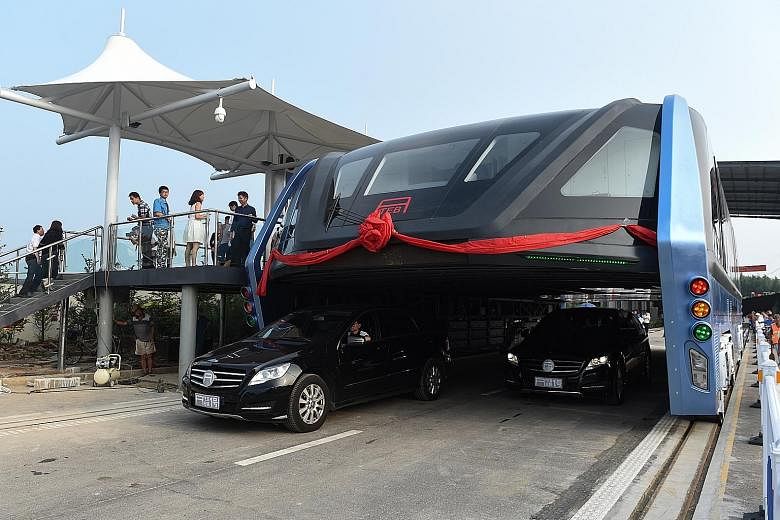SHIJIAZHUANG • Six years ago, a Chinese engineer came up with a novel way to beat China's notorious traffic gridlock: a giant, elevated bus that allows cars to pass underneath.
Mr Song Youzhou first introduced the concept at a Beijing exhibition in 2010, but doubts about the project led to the cancellation of a trial run.
Six years later, the so-called straddling bus underwent its inaugural road test on Tuesday in Qinhuangdao, Hebei province, reported Xinhua news agency.
The test run was conducted on a 300m-long controlled track, separate from road traffic, reported the Telegraph. Each 22m-long vehicle can carry up to 300 passengers, and up to four Transit Elevated Bus (TEB) carriages, each measuring 22m long, 7.8m wide and 4.8m high, can be linked together.
 The interior of the TEB-1. Each 22m-long vehicle can carry up to 300 passengers. Up to four such carriages can be linked together. PHOTO: XINHUA
The interior of the TEB-1. Each 22m-long vehicle can carry up to 300 passengers. Up to four such carriages can be linked together. PHOTO: XINHUA
Only one carriage was used for the test run on Tuesday.
The bus, officially known as TEB-1, can arc over two lanes of traffic, allowing cars no higher than 2m to drive under it. It can travel at speeds of up to 60kmh.
Mr Song estimates the straddling bus could reduce traffic congestion in cities by as much as 30 per cent.
Apart from Qinhuangdao, several cities including Tianjin and Zhoukou have inked contracts with his firm, Beijing-based TEB Technology, for pilot projects that will involve the construction of hundreds of miles of tracks starting this year.
Mr Song says each electrically powered bus can replace 40 conventional buses, thus reducing traffic pollution. The bus would either run on embedded rails on both sides of the street or follow painted guidelines, presumably with computer guidance.
"The biggest advantage is that the bus will save lots of road space," he told Xinhua earlier in an interview.

